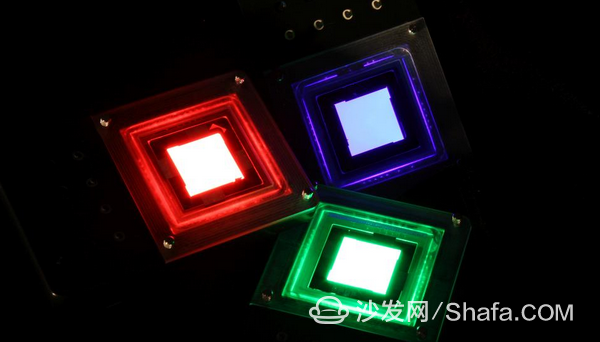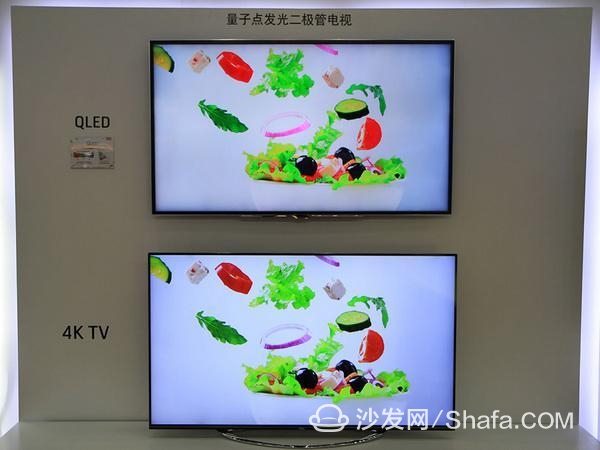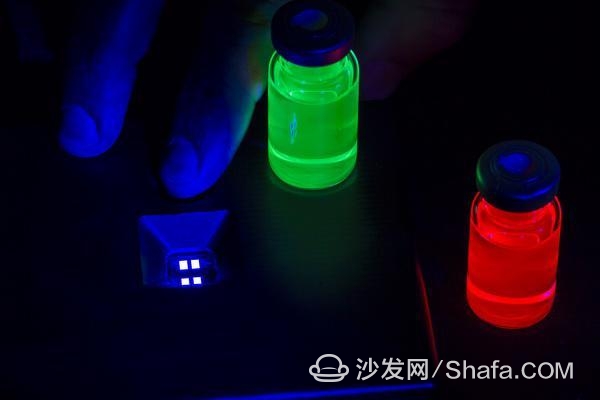
The competition in the TV industry is far more intense than expected. Advanced features such as 4K and HDR are impressive, but in fact, the bottom panel technology is the key to determining the display effect of flat-panel TVs.
In recent years, Sony and Samsung have focused on the improvement of traditional LCDs, and LG has regarded OLED technology as a revolution in television. Obviously, OLED outstanding contrast, black level is unmatched by LCD, but users need to bear high prices, which is why Samsung, Sony and other manufacturers have launched OLED TV, but the reason for giving up finally.
Under these circumstances, quantum dots have become the new blue ocean for LCD/LED manufacturers. Samsung's SUHD and Sony's new TRILUMINOS are all outstanding QDs in the market. In short, Quantum Dots is a new type of LCD screen backlight technology that integrates quantum dot materials into LED light sources to neutralize the blue light typical of LCD screens to achieve better contrast and black levels. Of course, quantum dots are better than traditional LED backlight technology, but they still can't reach the level of OLEDs. In this case, Samsung tried to develop a brand new panel type, which is QLED.
What is QLED

QLED is the abbreviation of "Quantum Dots Light Emitting Diode Display", which is a quantum dot light emitting diode. Unlike quantum dot backlight technology, it is more like an OLED and has self-emission characteristics, but self-emissive objects are not organic diodes but quantum dots. This technology can generate images by electrically driving the quantum dots themselves, eliminating the need for liquid crystals and backlighting, and is actually a new type of screen.
There are many advantages of QLED, including better contrast and wider color gamut. In addition, manufacturers can freely control each pixel through software and control the display more flexibly.
Currently, the two companies that master quantum dot related technologies are Nanosys (for Samsung TV) and QDVision (for TCL and other brands), both of which are dedicated to the development of QLED technology. Samsung had previously demonstrated QLED TV, but did not specify its specific plans and time for entry into the consumer market.
Can QLED defeat OLED?

Obviously, it seems too early to discuss this issue. On the one hand, OLED technology has gradually matured under the promotion of LG. In addition to using yellow and blue OLEDs to create unique "white light" technology, LG OLED TVs have also achieved certain improvements in terms of size, price, screen image retention and other issues. Promote.
On the other hand, QLED is still in the conceptual stage, Samsung did not disclose specific commercial plans. Of course, QLEDs and OLEDs are technically similar, and the use of quantum dots as an alternative to organic diodes seems to be more desirable, and future development prospects are worth looking forward to. But at least, we still need to wait three to five years before we can see QLEDs make a difference in the market.
110KV, 220KV Oil-resistant Heat-shrinkable Tubing
110KV, 220KV oil-resistant heat-shrinkable tubing
110KV, 220KV oil-resistant heat-shrinkable tubing,Heat-shrink tube,Heat shrinkable tubing,thermal contraction pipe,Shrink tube
Mianyang Dongyao New Material Co. , https://www.mydyxc.com